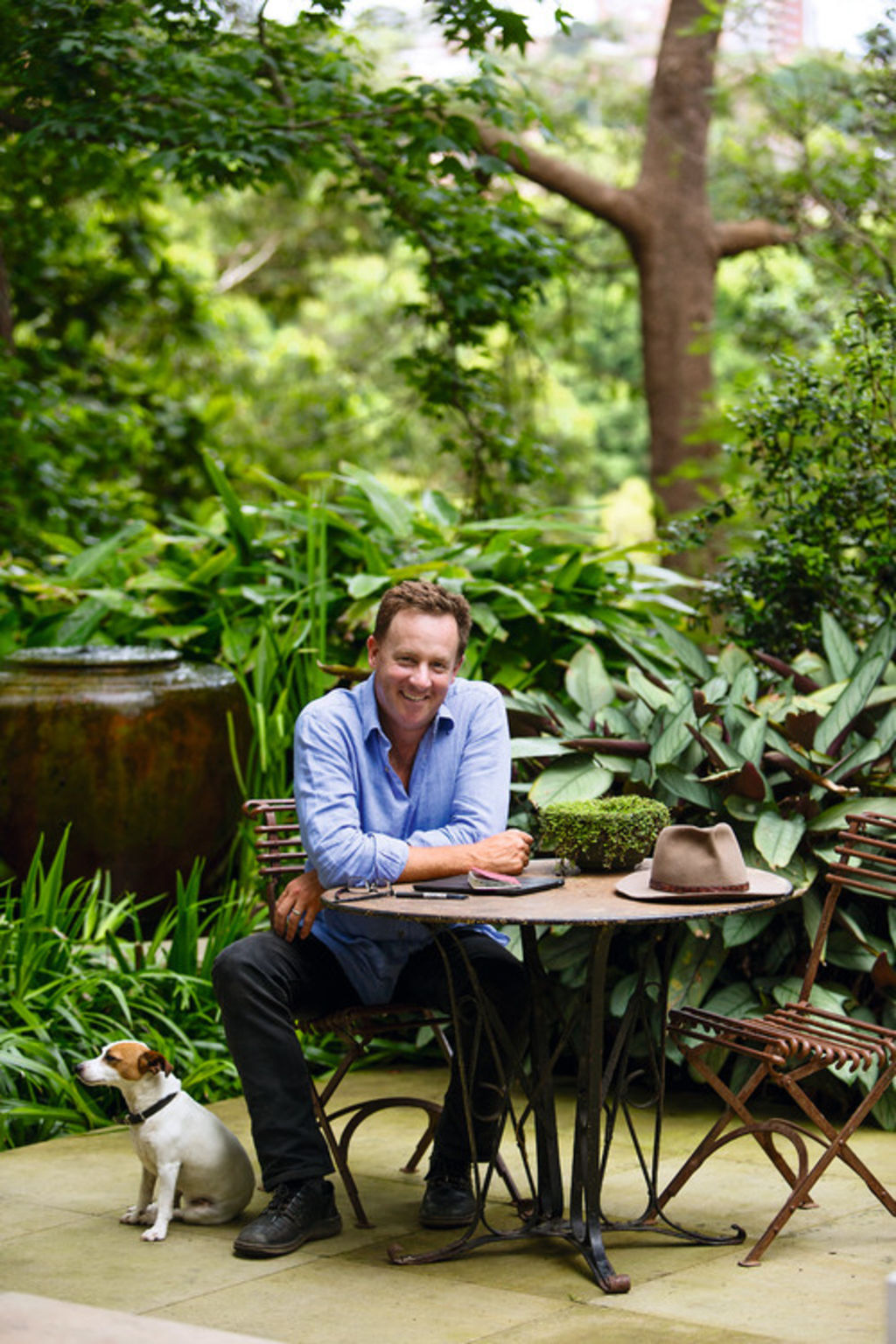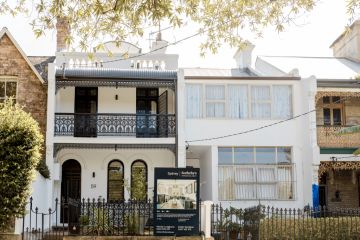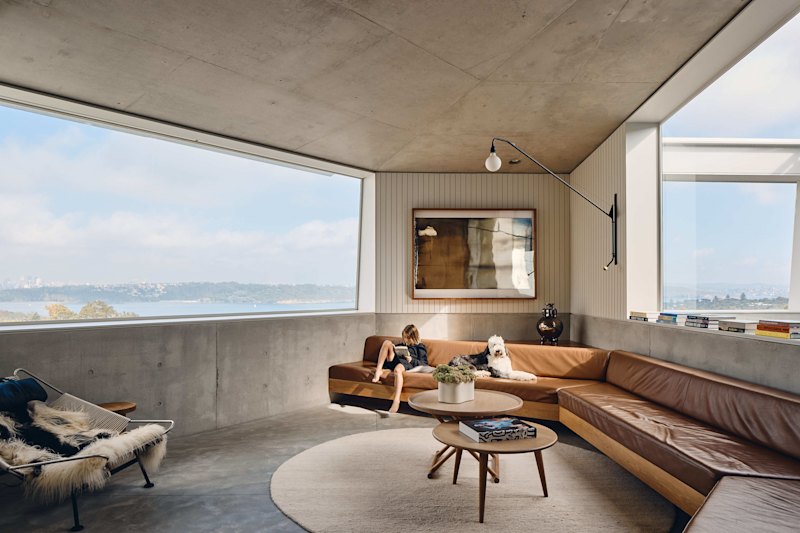Garden makeover: An astonishing Sydney garden that was once a zoo

Author: Vanessa Walker on Houzz
It’s called the Zoo Garden – a backyard in Sydney’s inner west that was once a private zoo. Here, in an edited extract from his latest book The New Australian Garden, landscape designer Michael Bates takes us step-by-step through his transformation of this magical space.

Landscape designer Michael Bates started his career as a nursery apprentice before studying horticulture. He was then mentored by Japanese master landscape architect Masayoshi Uchiyama, before founding Bates Landscape, one of Sydney’s leading landscaping firms.
The Zoo Garden
One of the key elements of the New Australian Garden is the preservation, celebration and adaptive reuse of our built heritage. This garden in Sydney’s inner west is a magical example of how marrying the past and the present can create a “lived-in” feel that is truly extraordinary. The garden was once a private zoo, and it surrounds a great dame of high Victorian architecture.
The fashion to collect exotic plants and animals, and arrange them in enclosures, was part of Sydney’s history until the great manufacturer and philanthropist Sir Edward Hallstrom’s collection eclipsed all others and launched Taronga Zoo. The current owners embraced the vision and style of the project with both hands. With “the dynamic duo” of architect Jim Koopman, from Allen Jack+Cottier Architects, and landscape architect Vladimir “Tom” Sitta at the wheel, the clients strapped themselves in for a wild ride. I was the last guest to arrive – another landscaper completed the pool area before we joined the party.

Repainting and replanting
The blend between the old and the new starts at the front of the house. The clients had layers of paint painstakingly removed to return the exterior walls back to bare render. The patina of the remaining surface is set off perfectly by the application of fresh paint to the fretwork. Injecting the new carefully into the original fabric makes everything appear purposeful, conscious, considered and definitely finished.
The front garden is dominated by too many giant trees – all of which are protected. A bunya pine precludes the use of the driveway for months at a time because the large falling fruits can smash a car or, worse still, injure a person. This lockdown because of a wild inhabitant is a theme of the entire garden.
The forest in the front garden had risen up with growth and root mass, which made grading on the ground storey a challenge. We managed to establish an arrangement of spiral ginger, indestructible cast-iron plant, Clivia, sago palm, curly palm, Swiss cheese plant, tree philodendron, kentia palm and blue thunbergia.

The deliberately broken corner of the residence draws the garden inside
We laid a series of sandstone kerbstones against the driveway, preserving the paths, corner borders and landings. Some extra sandstone was added to the driveway, infilled with stabilised decomposed granite. We used a special compound imported from the United States that promised flexibility while remaining rigid. It felt like the emperor’s new clothes at the time – but it has held up and has allowed roots to continue to grow underneath.
Outstanding deck design
[Architect] Jim [Koopman] inserted a large glass ceiling above the deck that takes up almost the entire space between the trees and the house. It allows the deck to operate as a part of the interior of the house while appearing to be totally exterior to the building.

The stainless-steel curtain articulates the garden space
The addition of a two-storey-high stainless-steel curtain that slides along the back edge of the deck is a theatrical element that allows the big room to feel more enclosed at meal times. The young family performs plays and has fun finetuning the garden’s atmosphere with the pull of the eye-catching curtain.
Dominated by remnants of stucco concrete, the next garden space features a large wisteria cave. A traditional artisan blacksmith was called in to craft a steel wisteria support that looks like an extension of the vine itself. The clients playfully instructed him to make a monkey swinging from the vine. An ageing weeping bottlebrush sits nearby in a bed of decomposed granite; it is accompanied by an old canoe that looks like it floated to the garden during a flood and remains because [it] belongs.
A refreshing retreat
A row of stepping stones, artfully laid out by [landscape architect] Tom with his signature cut-outs, leads to the pool area. A glass box containing a fish skeleton sits at one end of the moat between the pool and the lawn. It’s a sculptural feature that both functions as a pool fence and draws on the site’s zoological past. The modern pool sits right up against the tall boundary wall covered in Boston ivy, and features a snug sun deck. A remnant door from the old zoo was added to enhance the sense of intrigue of what lies beyond. A stream of water tinkles into the pool, amusing both the designer and the clients.
When old becomes new
A carport fits into the corner of the garden, and is disguised by a series of old timber ladders arranged at different angles and clothed in creeping fig. This is a great example of how the artful use of an obsolete object can be inexpensive and effective. Imagination trumps the banal every time. A small patch of grass provides amenity for the dog and a feeling of clearing and openness that doesn’t exist elsewhere.
Dining on the deck is a grand experience
An existing copse of kentia palm with an understorey of shell ginger puts an edge on the garden. This lush garden is private and contained, a living museum that houses both the old and the new, the wild and the tame. Layers of existence are occupied by a real family living in and loving the house and garden today.

This is an edited extract from The New Australian Garden by Michael Bates (Murdoch Books, RRP $59.99). Photography by Jason Busch.
We recommend
We thought you might like
States
Capital Cities
Capital Cities - Rentals
Popular Areas
Allhomes
More







